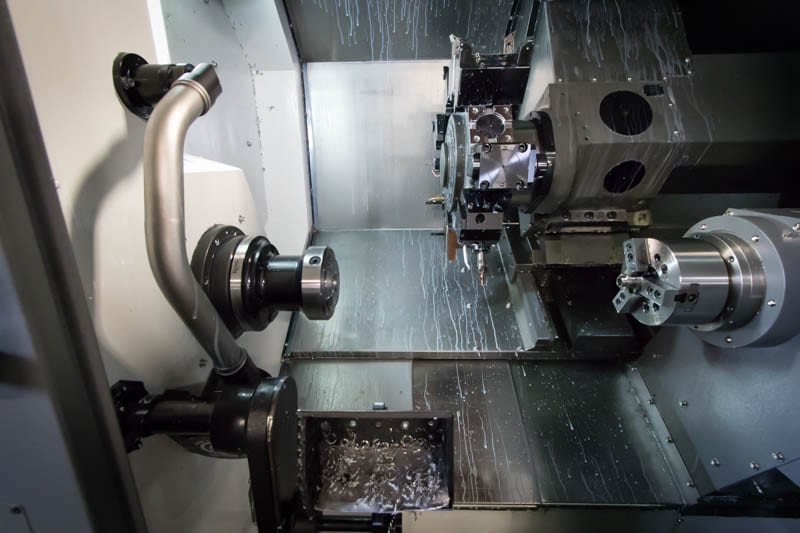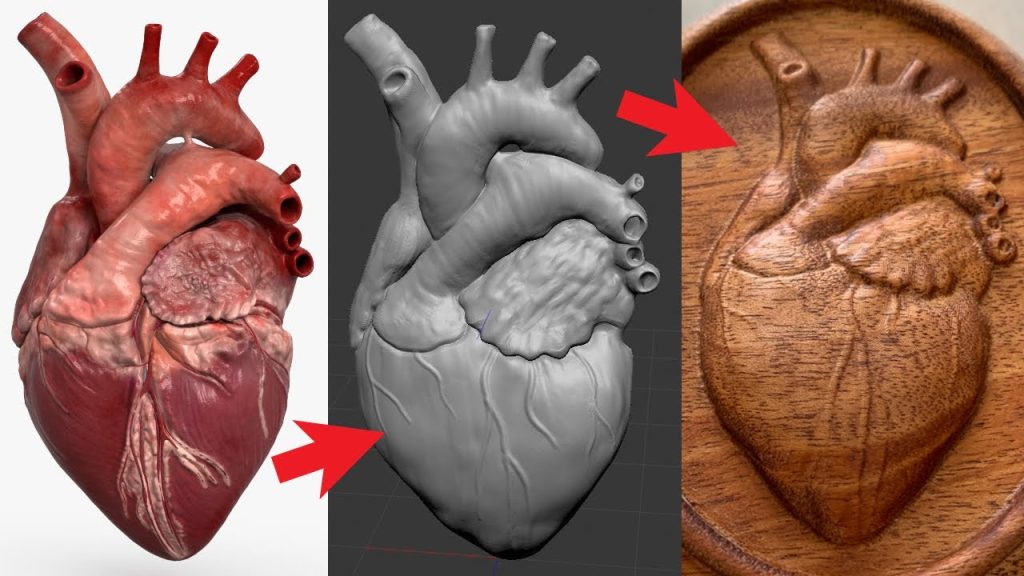Table of Contents
Are you a CNC lathe operator looking to expand your skills and knowledge? Turning a ball on a CNC lathe may seem daunting at first, but with the right techniques and tools, it can be a straightforward process. In this article, we will guide you through the steps to create a perfectly round ball on a CNC lathe.
First, we will cover the necessary tools and materials needed for the job, including the type of lathe, cutting tools, and the material to be turned. Then, we will dive into the step-by-step process for turning a ball, including setting up the machine, choosing the right tool path, and fine-tuning the details. By the end of this article, you will have the knowledge and confidence to turn perfect balls on your CNC lathe.
- Set up the lathe with a 4-jaw chuck and secure the stock material.
- Use a center finder to locate the center of the material and mark it with a punch.
- Mount a ball turning attachment onto the tool post of the lathe.
- Select the desired ball size and adjust the attachment accordingly.
- Start the lathe and turn the ball by moving the cutting tool in a circular motion.
- Measure the ball periodically with a micrometer to ensure the desired size is achieved.
- Finish the ball with sandpaper or a polishing wheel.
How to Turn a Ball on a CNC Lathe?
Turning a ball on a CNC lathe may seem like a daunting task, but it is actually quite simple when you know the right steps. In this article, we’ll guide you through the process of turning a ball on a CNC lathe, step-by-step, and provide you with some tips and tricks to make the process easier.
Step 1: Choose the Right Tooling
The first step to turning a ball on a CNC lathe is to choose the right tooling. You will need a ball turning attachment, which is a device that attaches to your lathe and allows you to turn perfect spheres. There are many different ball turning attachments available on the market, so make sure to choose one that is compatible with your lathe and meets your needs.
Once you have your ball turning attachment, you will need to select the right tooling for the job. You will need a cutting tool that is capable of cutting spherical shapes. The most common type of cutting tool for this job is a ball nose end mill, but there are other options available as well.
When choosing your tooling, make sure to consider the diameter of the ball you want to turn, the material you are working with, and the surface finish you are trying to achieve.
Step 2: Prepare the Workpiece
Before you can start turning your ball, you will need to prepare the workpiece. This involves mounting the workpiece securely in your lathe and ensuring that it is properly centered and aligned.
Once your workpiece is mounted, you will need to clean it thoroughly to remove any dirt, debris, or oils that may be present. This will help to ensure that your cutting tool operates correctly and that you achieve the desired surface finish.
Step 3: Set Up Your Machine
Next, you will need to set up your machine for ball turning. This involves adjusting the speed, feed, and depth of cut to ensure that you achieve the desired results.
When setting up your machine, make sure to refer to your manufacturer’s instructions and take into account the diameter of the ball you are turning, the material you are working with, and the surface finish you are trying to achieve.
Step 4: Start Turning
Now it’s time to start turning your ball. Begin by making a rough cut using your ball nose end mill or other cutting tool, taking care to keep the tool perpendicular to the workpiece.
Once you have made your rough cut, you can begin to refine the shape of your ball. Take light cuts, gradually reducing the diameter of the ball until you achieve the desired size and shape.
Step 5: Finish the Surface
Once you have turned your ball to the desired size and shape, it’s time to finish the surface. This involves using a fine-grit sandpaper or polishing compound to remove any rough spots and achieve a smooth, polished surface.
When finishing the surface, make sure to take your time and work slowly, using light pressure to avoid damaging the surface of your ball.
Step 6: Inspect Your Work
After you have finished turning and polishing your ball, it’s important to inspect your work to ensure that it meets your specifications. Check the diameter, roundness, and surface finish to ensure that your ball is perfect.
Step 7: Benefits of Turning Balls on a CNC Lathe
Turning balls on a CNC lathe offers many benefits, including:
– Precision: CNC lathes are capable of turning perfect spheres with incredible precision, ensuring that your balls are uniform in size and shape.
– Efficiency: CNC lathes are fast and efficient, allowing you to turn balls quickly and easily.
– Versatility: With the right tooling, you can turn balls from a wide range of materials, including metals, plastics, and more.
– Consistency: CNC lathes can turn balls with consistent results, ensuring that your products meet the same high standards every time.
Step 8: Ball Turning vs. Other Methods
There are many different methods for turning balls, including manual lathe turning, manual milling, and even 3D printing. Here are some of the benefits of ball turning on a CNC lathe compared to these other methods:
– Precision: CNC lathe turning is more precise than manual lathe turning, manual milling, or 3D printing.
– Speed: CNC lathe turning is faster than manual lathe turning or manual milling.
– Scalability: CNC lathe turning is scalable, allowing you to turn large quantities of balls quickly and easily.
– Flexibility: CNC lathes can turn balls from a wide range of materials and sizes, making them more versatile than manual methods.
Step 9: Tips and Tricks for Turning Balls on a CNC Lathe
Here are some tips and tricks to help you turn perfect balls on your CNC lathe:
– Use the right tooling: Make sure to choose the right ball turning attachment and cutting tool for your job.
– Take light cuts: Gradually reduce the diameter of your ball with light cuts to avoid damaging the surface.
– Work slowly: Take your time when finishing the surface of your ball to avoid damaging the surface.
– Inspect your work: Always inspect your work to ensure that it meets your specifications.
Step 10: Conclusion
In conclusion, turning balls on a CNC lathe is a simple process when you know the right steps. By choosing the right tooling, preparing your workpiece, and following the steps outlined in this article, you can turn perfect balls quickly and easily. With the benefits of precision, efficiency, versatility, and consistency, CNC lathe turning is the best method for turning balls for a variety of applications.
Frequently Asked Questions
In this section, we will answer some of the most common questions related to turning a ball on a CNC lathe.
What is a CNC lathe?
A CNC lathe is a machine tool that rotates a workpiece on its axis to perform various operations such as cutting, drilling, and turning. It is controlled by a computer program and can produce precise and complex parts with high accuracy and speed.
Turning is one of the most common operations performed on a CNC lathe, where the workpiece is rotated and a cutting tool is used to remove material and shape it into the desired form. It is widely used in the manufacturing industry for producing parts for various applications.
What are the steps to turn a ball on a CNC lathe?
The process of turning a ball on a CNC lathe involves several steps. First, the workpiece is mounted and centered on the lathe chuck, and the cutting tool is positioned at the desired angle and height. Then, the lathe is started, and the cutting tool is fed into the workpiece while it rotates.
As the cutting tool removes material, the ball shape is gradually formed. The operator needs to monitor the process and adjust the cutting parameters such as speed, depth of cut, and feed rate to achieve the desired surface finish and accuracy. Finally, the workpiece is removed from the lathe, and any necessary finishing operations are performed.
What are the factors that affect the quality of a turned ball?
The quality of a turned ball on a CNC lathe depends on various factors such as the cutting parameters, the material properties, and the tool geometry. The cutting parameters such as speed, feed rate, and depth of cut affect the surface finish, accuracy, and tool life.
The material properties such as hardness, toughness, and thermal conductivity affect the cutting forces, chip formation, and tool wear. The tool geometry such as the rake angle, clearance angle, and nose radius affect the cutting forces, chip evacuation, and surface finish.
What are the common cutting tools used for turning balls on a CNC lathe?
The common cutting tools used for turning balls on a CNC lathe are carbide inserts, which are made of tungsten carbide and other materials. They come in various shapes and sizes, and are designed for specific applications such as roughing, finishing, and threading.
Carbide inserts offer high cutting speeds, long tool life, and excellent surface finish, making them ideal for turning balls and other complex shapes. They can be easily replaced and indexed, reducing downtime and increasing productivity.
What are the advantages of turning balls on a CNC lathe?
Turning balls on a CNC lathe offers several advantages over other methods such as manual turning or grinding. It provides high accuracy, repeatability, and consistency, ensuring that each ball is identical in size and shape.
It also offers high productivity, as multiple balls can be turned at once using a multi-spindle lathe. Moreover, it can produce complex shapes and features that are difficult to achieve using other methods, and can work with a wide range of materials such as metals, plastics, and composites.
In conclusion, turning a ball on a CNC lathe may seem like a daunting task, but with the right tools and techniques, it can be easily achieved. By following the steps outlined in this article, you can create precise and beautiful spherical shapes that are perfect for a wide range of applications.
Firstly, it is essential to choose the right material for your ball. Depending on your intended use, you may need to consider factors such as hardness, durability, and resistance to wear and tear. Once you have selected your material, it is important to set up your CNC lathe correctly, ensuring that all settings are calibrated for the best possible results.
Next, you will need to use a series of cutting tools to shape your ball. This can be a complex process, requiring careful attention to detail and a steady hand. However, by taking your time and following the proper techniques, you can create a perfectly spherical shape that is both aesthetically pleasing and functional.
In conclusion, turning a ball on a CNC lathe is a challenging but rewarding process that requires a combination of skill, patience, and attention to detail. By following the steps outlined in this article, you can create beautiful and precise spherical shapes that are perfect for a wide range of applications. With practice and dedication, you can become an expert in the art of CNC lathe ball turning, and create stunning pieces that are sure to impress.
Request a quote today!
[contact-form-7 id="1578" title="Contact form"]
Please compress the file into a ZIP or RAR file before uploading. Alternatively, send through your RFQ by email.
enquires@unitymanufacture.com





